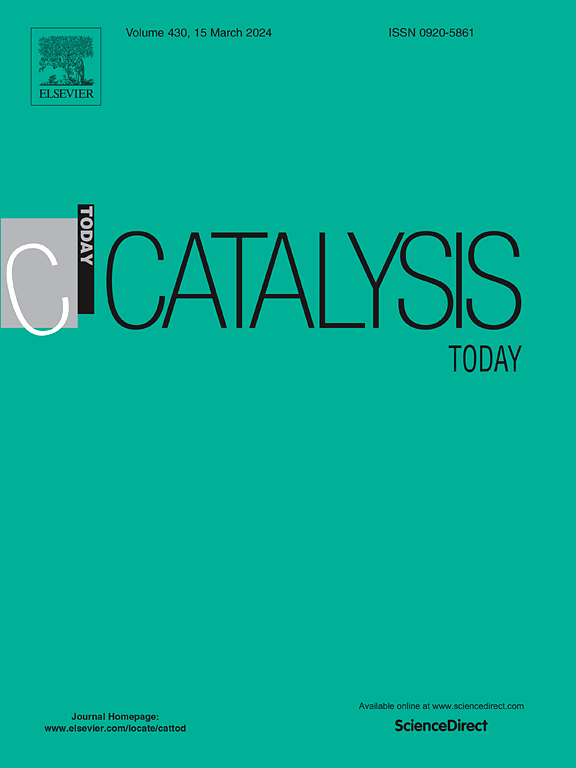Enhanced ammonia synthesis over barium cerate-supported cobalt catalyst by rare-earth element doping
IF 5.2
2区 化学
Q1 CHEMISTRY, APPLIED
引用次数: 0
Abstract
A series of BaCeO3 doped with various rare-earth elements (REE = Nd, Sm, Gd) were synthesised and used as the supports for cobalt catalysts for ammonia synthesis. The effects of rare-earth dopant type and concentration on the physicochemical properties and catalytic activities were studied using, e.g., XRD, STEM-EDX, and TPD techniques. Catalyst testing revealed that the optimal doping concentration was 10 mol%, regardless of the rare-earth ion. Samarium was identified as the most effective dopant, followed by gadolinium and neodymium. The superior performance of the Co/BaCe0.9REE0.1O3–δ catalysts was due to the incorporation of REE dopant into the BaCeO3 structure, which increased the electron density, enabling efficient electron transfer from the support to the Co surface. This, in turn, facilitated the N2 dissociative adsorption, recognised as the rate-determining step (RDS) of ammonia synthesis. In addition, the catalysts were characterised by favourable hydrogen adsorption properties (co-existence of weak and strong adsorption sites), contributing to the effective hydrogen activation under the reaction conditions. This study provides an effective approach for designing cobalt catalysts supported on perovskites, demonstrating their great potential as next-generation catalysts for ammonia synthesis.
通过掺杂稀土元素提高钡铈支撑钴催化剂的氨合成能力
合成了一系列掺杂不同稀土元素(REE = Nd, Sm, Gd)的BaCeO3,并将其作为氨合成钴催化剂的载体。采用XRD、STEM-EDX和TPD等技术研究了稀土掺杂类型和浓度对催化剂理化性质和催化活性的影响。催化剂测试表明,无论稀土离子含量如何,最佳掺杂浓度均为10 mol%。钐是最有效的掺杂剂,其次是钆和钕。Co/BaCe0.9REE0.1O3 -δ催化剂的优异性能是由于在BaCeO3结构中掺入稀土元素,增加了电子密度,使电子从载体有效转移到Co表面。这反过来又促进了N2解离吸附,被认为是氨合成的速率决定步骤(RDS)。此外,催化剂具有良好的氢吸附性能(弱和强吸附位点共存),有助于在反应条件下有效的氢活化。该研究为设计钙钛矿负载型钴催化剂提供了有效途径,展示了其作为下一代氨合成催化剂的巨大潜力。
本文章由计算机程序翻译,如有差异,请以英文原文为准。
求助全文
约1分钟内获得全文
求助全文
来源期刊

Catalysis Today
化学-工程:化工
CiteScore
11.50
自引率
3.80%
发文量
573
审稿时长
2.9 months
期刊介绍:
Catalysis Today focuses on the rapid publication of original invited papers devoted to currently important topics in catalysis and related subjects. The journal only publishes special issues (Proposing a Catalysis Today Special Issue), each of which is supervised by Guest Editors who recruit individual papers and oversee the peer review process. Catalysis Today offers researchers in the field of catalysis in-depth overviews of topical issues.
Both fundamental and applied aspects of catalysis are covered. Subjects such as catalysis of immobilized organometallic and biocatalytic systems are welcome. Subjects related to catalysis such as experimental techniques, adsorption, process technology, synthesis, in situ characterization, computational, theoretical modeling, imaging and others are included if there is a clear relationship to catalysis.
 求助内容:
求助内容: 应助结果提醒方式:
应助结果提醒方式:


